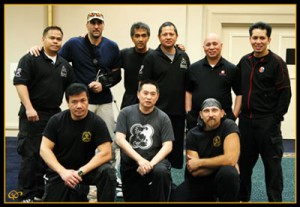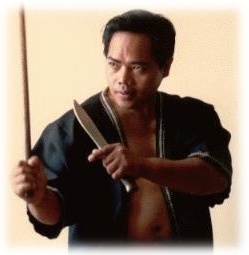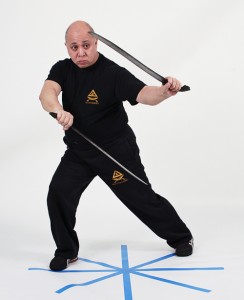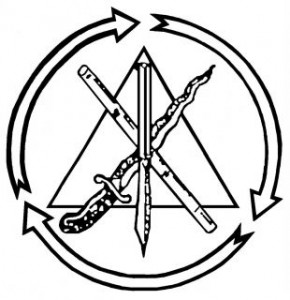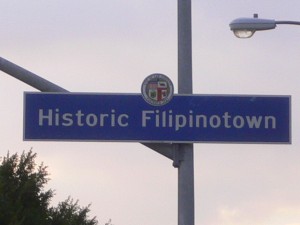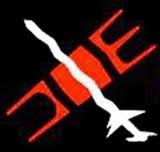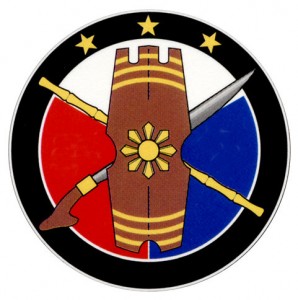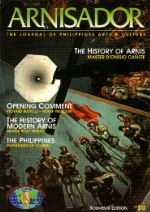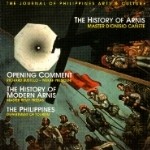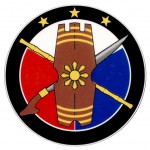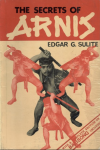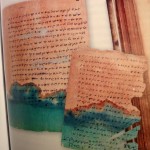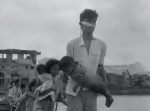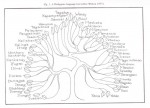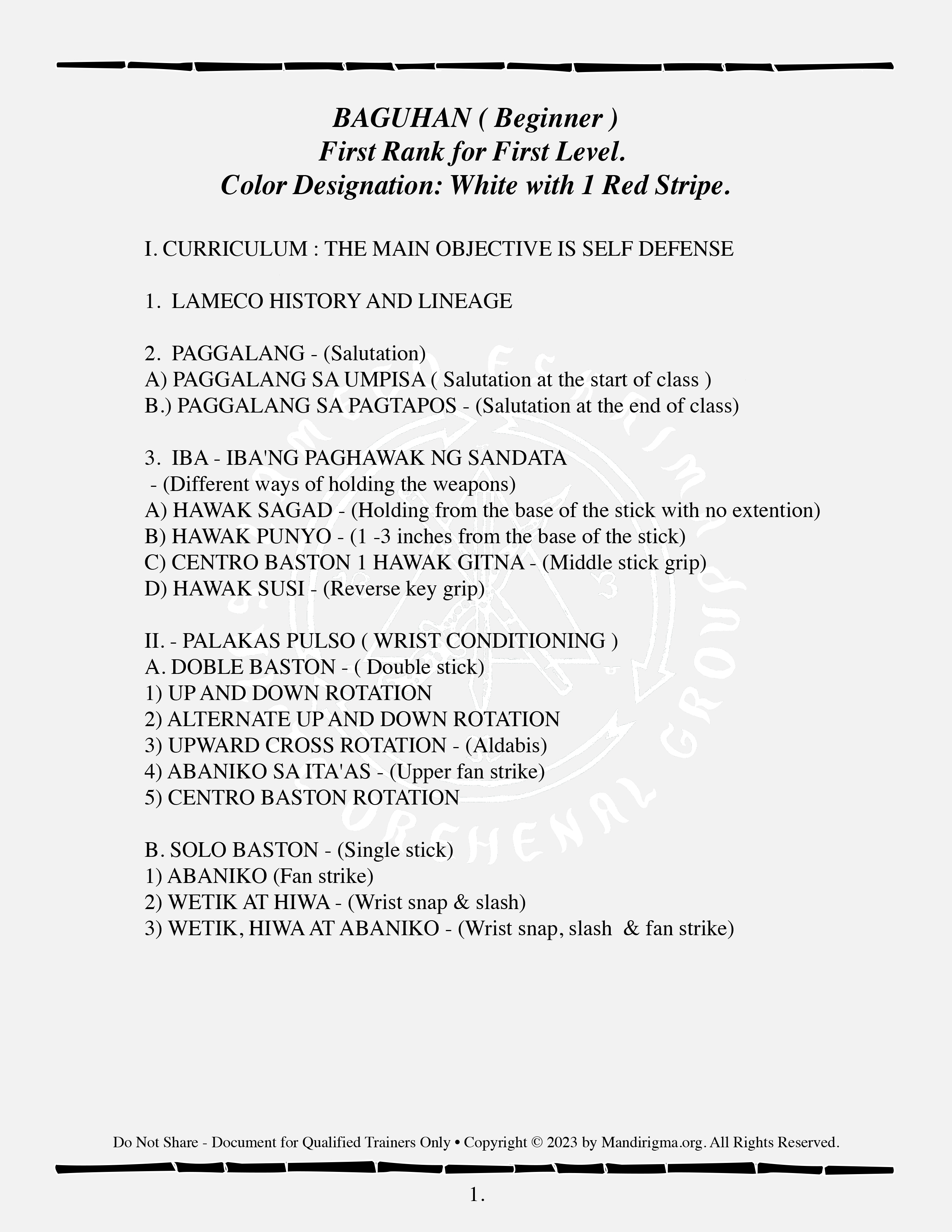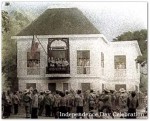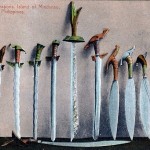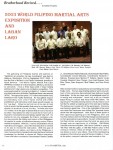A finales de Junio 2011 Workshop con armas blancas con Guro Dino Flores - conocido como uno de los peleadores más técnicos y avanzados del grupo SOG de LAMECO y KALIS ILUSTRISIMO (Sulite Original Backyard Group) http://www.kali-jeetkunedo.com/6noticias.html Interested contact with Sifu Tim Fredianelli 615308348 Space must be reserved in advance for these courses, places are limited to ensure quality. Special rates and privileges for members only at our school … [Read more...]
Macario Sakay: Tulisán or Patriot? by Paul Flores
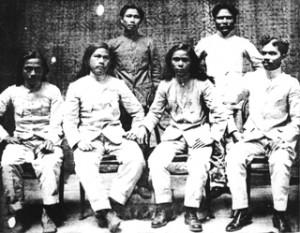
Macario Sakay: Tulisán or Patriot? by Paul Flores © 1996 by Paul Flores and PHGLA All rights reserved Contrary to popular belief, Philippine resistance to American rule did not end with the capture of Emilio Aguinaldo in 1901. There were numerous resistance forces fighting for Philippine independence until the year 1910. One of these forces was led by Macario Sakay who established the Tagalog Republic. Born in 1870 in Tondo, Macario Sakay had a working-class background. He started out as an apprentice in a calesa manufacturing shop. He was also a tailor, a barber, and an actor in comedias and moro-moros. His participation in Tagalog dramas exposed him to the world of love, courage, and discipline. In 1894, Sakay joined the Dapitan, Manila branch of the Katipunan. Due to his exemplary work, he became head of the branch. His nightly activities as an actor in comedias camouflaged his involvement with the Katipunan. Sakay assisted in the operation of the Katipunan press. During the early days of the Katipunan, Sakay worked with Andres Bonifacio and Emilio Jacinto. He fought side by side with Bonifacio in the hills of Morong (now Rizal) Province. During the initial stages of the Filipino-American war, Sakay was jailed for his seditious activities. He had been caught forming several Katipunan chapters and preaching its ideals from town to town. Republika ng Katagalugan Released in 1902 as the result of an amnesty, Sakay established with a group of other Katipuneros the Republika ng Katagalugan in the mountains of Southern Luzon. Sakay held the presidency and was also called "Generalisimo." Francisco Carreon was the vice-president and handled Sakay's correspondence. Julian Montalan was the overall supervisor for military operations. Cornelio Felizardo took charge of the northern part of Cavite (Pasay-Bacoor) while Lucio de Vega controlled the rest of the province. Aniceto Oruga operated in the lake towns of Batangas. Leon Villafuerte headed Bulacan while Benito Natividad patrolled Tanauan, Batangas. In April 1904, Sakay issued a manifesto stating that the Filipinos had a fundamental right to fight for Philippine independence. The American occupiers had already made support for independence, even through words, a crime. Sakay also declared that they were true revolutionaries and had their own constitution and an established government. They also had a flag. There were several other revolutionary manifestos written by the Tagalog Republic that would tend to disprove the U.S. government's claim that they were bandits. The Tagalog Republic's constitution was largely based on the early Katipunan creed of Bonifacio. For Sakay, the new Katipunan was simply a continuation of Bonifacio's revolutionary struggle for independence. Guerilla tactics In late 1904, Sakay and his men took military offensive against the enemy. They were successful in seizing ammunition and firearms in their raids in Cavite and Batangas. Disguised in Philippine Constabulary uniforms, they captured the U.S. military garrison in Parañaque and ran away with a large amount of revolvers, carbines, and ammunition. Sakay's men often employed these uniforms to confuse the enemy. Using guerrilla warfare, Sakay would look for a chance to use a large number of his men against a small band of the enemy. They usually attacked at night when most of the enemy was looking for relaxation. Sakay severely punished and often liquidated suspected collaborators. The Tagalog Republic enjoyed the support of the Filipino masses in the areas of Morong, Laguna, Batangas, and Cavite. Lower class people and those living in barrios contributed food, money, and other supplies to the movement. The people also helped Sakay's men evade military checkpoints. They collected information on the whereabouts of the American troops and passed them on. Muchachos working for the Americans stole ammunition and guns for the use of Sakay's men. Unable to suppress the growth of the Tagalog Republic, the Philippine Constabulary and the U.S. Army started to employ "hamletting" or reconcentration in areas where Sakay received strong assistance. The towns of Taal, Tanauan, Santo Tomas, and Nasugbu in the province of Batangas were reconcentrated. This cruel but effective counter-insurgency technique proved disastrous for the Filipino masses. The forced movement and reconcentration of a large number of people caused the outbreak of diseases such as cholera and dysentery. Food was scarce in the camps, resulting in numerous deaths. Meanwhile, search and destroy missions operated relentlessly in an attempt to suppress Sakay's forces. Muslims from Jolo were brought in to fight the guerrillas. Bloodhounds from California were imported to pursue them. The writ of habeas corpus was suspended in Cavite and Batangas to strengthen counter-insurgency efforts. With support cut off, the continuous American military offensive caused the Tagalog Republic to weaken. Fall of … [Read more...]
Lameco Sulite Orihinal Group
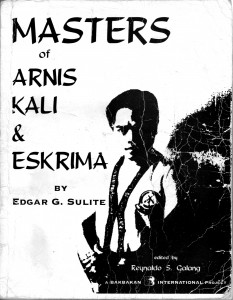
Lameco Sulite Orihinal Group Sulite Orihinal Group is comprised of dedicated Lameco Eskrima International practitioners who were handpicked by Punong Guro himself to be a part of his regular "backyard" training sessions. Many loyal Lameco practitioners have trained in the "backyard", yet there was and always will be a distinction between "Invitation Only" and "Open Invitation" students. The open invitation students were the selected few individuals who attended the rigorous, 3 days a week, 4-hour sessions and were frequently shown numerous techniques not shared with the general public. An important factor among the core members was that they held no administrative ties to other Filipino Martial Arts styles and systems. One of the primary reasons Punong Guro created the elite group was to create a first generation of practitioners that owed allegiance, first and foremost, to Lameco Eskrima. Because the sessions were conducted at his personal residence, Punong Guro was extremely selective about whom he allowed to participate. Punong Guro often mentioned that although many individuals were eager to train, very few actually allowed themselves to be trained. It is not a system, for it already exists, but a fraternity of dedicated practitioners with a common bond. One factor that is prevalent among the original core members is that they initially joined Lameco Eskrima International for reasons of pride, culture and heritage. The primary aim of the group is to keep the art of Lameco Eskrima alive through continued training in a combat realistic, non-commercial and non-political environment. Passion for the art was, and always will be, the prime motivator. As a sign of respect so that Punong Guro’s name shall always be remembered for many generations to come, the core members named themselves “Sulite Orihinal Group.” Sulite Orihinal Group considers their inherited knowledge more precious beyond any material compensation, just as much as the blood, sweat and tears that were spilled by our forefathers in order to obtain it, so we strive to be worthy of the generations of warriors before us. The desire of the brotherhood is to continue traveling upon the same path, which Punong Guro Edgar G. Sulite had started them on. They wish to keep his legacy, and the heritage, alive and pure and pursue it with a mind, body and sprit that is nothing short of being honorable. Sulite Orihinal Group will continue to uphold this tradition in order to maintain the spirit of brotherhood and unity amongst its members. Lameco Sulite Orihinal Group circa 1992 -1997 Lameco Sulite Orihinal Group circa 1992 -1997 Lowell Pueblos, Eric Koh, Ron Balicki Mar Elepano, Hospecio "Bud" Balani, jr., Rem V. Cruz, Dino Flores, Arnold Noche, Hans Anton Tan, Pelix Balencia, Dave Gould, Steve Grody Elmer "Bong" Hebia, Roger Agbulos, Jason Ancheta Marc F. Denny, Steve Tarani, Phil Rapagna , Choy Flores, Gary Quan Joel '"Jay" Adriatico, Bryant Emerson, Sung Han Kim, Rodney Wilson, Pantaleon " Mang Leo" Revilles, jr. ( R.I.P. ) … [Read more...]
What Makes A Grandmaster? By Punong Guro Edgar G. Sulite
What Makes A Grandmaster? By Punong Guro Edgar G. Sulite To be recognized as a Grandmaster or Master of combat arts in the Philippines, you must have made your reputation and show mental maturity and physical age. Grandmasters question the rankings of other grandmasters. Masters and grandmasters are criticized and questioned regarding their skills and abilities. Who bestowed their title? Do they have enough skills for the titles they carry? How many years have they been practicing the art? How old is he? How many followers and students does this man have? In other martial arts, the attainment of a certain level automatically designates the title Master or Grandmaster. In the Philippines, there are certain norms to be satisfied before one can be called and accepted as a Master or Grandmaster. A master of the art must be a master of himself. He must be in control. His daily life epitomizes a man in control of his life, his destiny. A master of the art must know his art, its origins, its history, its philosophy. He must know the techniques, the interplay of techniques, and the reversals of techniques. A master must know the basics, the intermediate forms and techniques, and the advance levels of the art. Mastery of the art does not only mean so many years in the art, but the amount of experience using the art, one's personal evolution within the art and personal dedication and contribution to the art. A master of the art must know how to teach and impart knowledge from the art. He must be able to communicate, elaborate and present the art in such a way that each student learns on a personal basis. Each instruction is adapted to the learning process and ability of the student. A master must be a real maestro, a real teacher. A master of the art must be of good character. He should epitomize the qualities of a leader, the majesty of a noble, and the courage and strength of a warrior. A master of the art is called and acknowledged a Master by other masters, never by himself. … [Read more...]
Grandmaster Antonio “Tatang” Ilustrisimo (1904 – 1997)
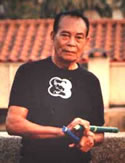
Grandmaster Antonio Ilustrisimo, Courtesy of Bakbakan International and GM Tony Diego Grandmaster Antonio Ilustrisimo (1902 - 1997) originally came from Santa Fe in Bantayan Island. He came from a family that has a very long history of martials and mystical tradition. His cousin, Floro Villabrialle, was the most famous Arnis master of Hawaii. His youngest uncle, Regino Ellustrisimo, was an Arnis master in Stockton, USA. Both men were mentioned in Dan Inosanto's book on Filipino martial arts. However, the most famous of his 4 direct paternal uncles, and the most powerful fighter of the 5 brothers (some say he has more than 7 uncles) was Melecio Ilustrisimo, one of the most famous Kali masters of the Philippines of the early 20th Century, being influential in northern Cebu - Bantayan and Bohol islands. All his forbears were expert warriors and were known to posses strange mystical powers. Grandmaster Ilustrisimo's students, fondly call him "Tatang" which means "grandfather". Tatang learnt Arnis under the tutelage of his father (Isidro Illustrisimo) and uncles (especially the famous Melecio Ilustrisimo) in the old way. There were 3 famous Eskrima families in Cebu at that time:- the Ilustrisimos, the Saavedras, and the Romos. Footwork was one of the first things he had to master. As a tiny boy, he was put on a small table and his teachers would use sticks to beat his legs. He had to learn how to avoid the blows. He was also put on 3 half coconut shells in a triangular pattern and given the same harsh treatment. This footwork is known as Tatlong Bao in the Ilustrisimo family. As a result he has mastered evasion and dodging at an early age. This is a training that Melecio Ilustrisimo himself thoroughly mastered as he was said to have nailed one foot to the ground and challenge all and sundry to defeat him. No one could, and that footwork is called "Walong Apak" (Nail Footwork) in Kalis Ilustrisimo. These skills of evasive footwork have all been mastered by Grandmaster Antonio Illustrisimo. He learnt the solo and double baston, espada daga, daga, bolo (sword), dos manos (a long stick/sword - roughly equivalent to the Samurai's sword) and various "weapons of convenience". In particular, as a speciality, Grandmaster Ilustrisimo is noted for is his expertise in bladed weapons - something which many modern Grandmasters of Arnis can not lay proper claim to since their real practical experience concentrated on the rattan sticks. (Claims by most systems that they can use swords are disputable and only partially true). This expertise as a swordman is not merely from personal experience and practice, but is the legacy of his family art of Ilustrisimo Kali which is a bladed art that stretches so far back in the family line that nobody could remember when it started. As a boy, the young Ilustrisimo had a very tough, stubborn, determined and indominatable spirit. When he heard of a far country called 'America', he decided to go there - at the age of 9 years old! When his parents would not listen to his panderings, he 'took' some family money and a machete, and again, 'took' a small rowing boat and paddled out to the sea to what he thought would be America, not realising how far America really is. He fortunately chance across a ship. The sailors aboard were surprised to see a young boy rowing out in the sea. Out of curiousity, perhaps concern as well, there approached him and asked him where he was going. "I am going to America in this boat!" was the confident answer. The sailors rocked in laughter. They somehow persuaded him to come with them. Of course, he did not get to America. But he did sail to a few ports, still not quite realising that America is still very, very far away.......... At a port, he chance on a family friend who recognised him, but not wishing to betray the high ideals of this young boy, he took him to the south as that friend was a Muslim. There the young boy grew up - strong, determined, proud and skillful in combat as ever. He was adopted into a the royal court as an adopted son of the Sultan of Sulu. (This was Hadji Butu who ascended to become HH Hadji Mohammad Jamalul Kiram II, the Sultan of Sulu) While in the South, he was priviledged to train in the the best of teachers that the royal court could have. He also trained with Pedro Cortes, another very famous master in the Mindanao region, who was used by the government to control the 'Rebelious South'. Pedro Cortes was a close friend a sparring partner of his father Isidro Ilustrisimo. Then one day, he was drinking at a beer house, he got into dispute with another man. The man drew his sword to kill Tatang, but the defty young boy beat him to the draw and, with one stroke of his own barong (Tatang's favourite type of sword), he cut off the enemy's head. The victim was left a headless man running … [Read more...]
